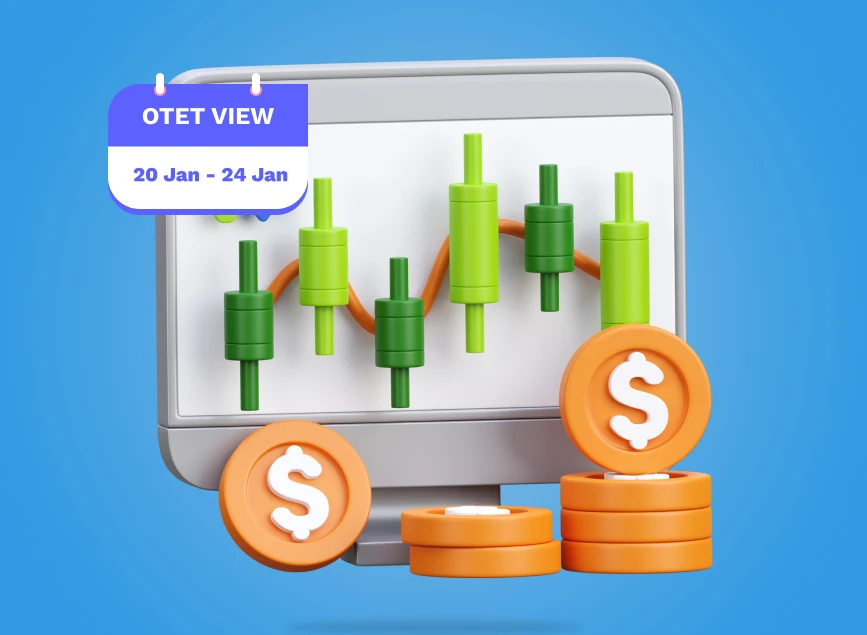
Global Economic Outlook, November 2025
forward-looking overview of the global economy as we head into November 2025. Growth is cooling but not collapsing, inflation continues to ease across major economies, but not in all. Central banks maintain a cautious “higher for longer” stance in some economies and in some others, central banks continued to lower the rates, such as US and Canada. The U.S. deceleration, Eurozone stabilization, UK fragility, Japan’s stimulus-plus-easy-policy mix, and China’s uneven rebound set the tone for global markets. Meanwhile, emerging markets show mixed momentum as capital flows, energy dynamics, and FX pressures diverge.
Here, we will breaks down key macro themes, policy expectations, and risks — from Fed guidance and energy markets to geopolitics and global liquidity — and outlines what investors and traders should monitor as the world navigates a late-cycle slowdown and shifting monetary landscape.
USA
October showed cooler inflation, firm services, stabilizing factories, and mixed housing under still-high mortgage rates. Fiscal and liquidity settings stayed orderly. Sentiment softened but not enough to derail activity. The Fed can stay patient and data-driven as the economy glides toward slower—but still positive—growth.
U.S. Economic Review — October 2025
The U.S. economy closed October on a broadly resilient footing, consistent with a controlled glide-path toward slower but still growth. Disinflation extended, activity indicators pointed to firm service-sector momentum and early stabilization in manufacturing, and labor and credit conditions remained supportive. Housing stayed mixed under elevated mortgage rates, and sentiment softened modestly, but not enough to materially dent activity. Fiscal and liquidity settings were orderly, with Treasury auctions well received and bank reserves healthy. Overall, October delivered another soft-landing-style print, giving the Federal Reserve scope to remain data-dependent and patient.
Macro Performance Highlights
Inflation continued to ease headline and core CPI held near 3.0% y/y, with core rising just 0.2% m/m, reinforcing gradual disinflation. The S&P Global Composite PMI printed 54.8, led by services at 55.2, while manufacturing (52.2) and selected regional surveys hinted at stabilization despite uneven regional conditions. Consumer sentiment softened (Michigan 53.6; Conference Board 94.6) as inflation expectations stayed elevated at the short end but anchored longer term.
Housing remained constrained by ~6.3–6.4% mortgage rates; existing sales hovered near 4.06M and pending activity plateaued. Fiscal conditions were stable — a ~$198B September surplus — while QT continued smoothly, bank reserves stayed near $3T, and Treasury auctions cleared well (10-yr ~4.12%, 30-yr ~4.73%). Market liquidity held firm, and Q3 GDP tracking near ~3.9% signaled healthy momentum into quarter-end.
Policy & Market Outlook
The Fed remains positioned to hold rates, citing steady labor markets and continued inflation progress. Balance-sheet runoff proceeds gradually, with communication tilting toward 2026 easing timing rather than renewed tightening — a “higher for longer, data-dependent” posture.
Market rates steepened early on supply concerns before easing as inflation data reassured. The dollar stayed firm initially, then consolidated into month-end. Equities benefited from solid earnings, particularly in financials and Mega cap tech, while credit spreads remained well-anchored amid ample liquidity.
U.S. Government Shutdown — Summary & Market Impact
The U.S. government entered a shutdown on October 1, 2025, after Congress failed to pass a full-year budget or another temporary funding bill. Now in its fifth week (around Day 30), repeated Senate attempts to reopen agencies have stalled amid partisan disputes over spending levels and policy riders tied to healthcare subsidies. With neither chamber securing bipartisan ground, the impasse persists.
The economic toll is mounting. The CBO estimates a $7–$14 billion hit to GDP, equating to a roughly 1–2 percentage-point drag on Q4 growth. Much of the lost federal labor output is unlikely to be recovered even after funding resumes. Roughly 750,000 federal workers are furloughed, while others work without pay, leading to widening disruptions — including delays in benefit programs such as SNAP. States have begun preparing emergency backstops to plug gaps.
Essential services — national security, air traffic control, and certain law-enforcement functions — continue under “excepted” status. Military pay remains uninterrupted, but civilian support operations are strained.
Markets have been volatile but controlled, with investors watching for a compromise. Talks have created “cautious optimism,” yet no breakthrough has emerged. The longer the shutdown persists, the higher the risk of permanent economic losses and erosion of broader confidence.
U.S. Economic Outlook — November 2025
The United States enters November with the economy transitioning from strong mid-year momentum toward a slower, more balanced expansion. Growth has decelerated but remains positive, supported by moderate consumer spending and business investment in technology. Private forecasts place Q3 GDP in the 2.5%–3% range, down from Q2’s 3.8%, and activity in November likely runs near 2% as inventories and trade tailwinds fade and demand softens. Despite this cooling, the economy remains above stall-speed.
Inflation continues to moderate. Headline and core CPI held nearly 3% year-over-year in September, with a subdued 0.2% monthly core gain. Housing inflation is easing, though food remains sticky and earlier tariffs continue to filter through supply chains. October CPI is expected to remain in the high-2s to low-3% range, keeping disinflation on track but leaving price pressures slightly above target.
Labor conditions are shifting toward softness. Hiring slowed sharply through late summer, unemployment has risen to ~4.3%, and private indicators show hiring plans and job openings cooling. The delayed October jobs report will be pivotal in assessing whether the labor market stabilizes or slips closer to net employment losses.
Consumers remain resilient yet stretched. Spending has held up, particularly on services like travel, but confidence has weakened, and delinquencies are inching higher. Real income growth is slowly improving as inflation cools, yet shrinking savings cushions and employment uncertainty could moderate spending into the holiday period.
Industry remains subdued but stabilizing, with manufacturing contracting at a slower pace and supply chains steady. Services growth has softened, though healthcare, education, and travel continue to provide support. Housing remains the weakest segment, with 8% mortgage rates suppressing activity, construction, and sentiment.
Policy remains a central driver. The Fed has eased twice and paused balance sheet runoff starting December, but signals data-dependent caution rather than a rapid cutting cycle. Meanwhile, the government shutdown enters a fifth week, delaying federal data and clouding visibility. A funding resolution is expected, but timing remains uncertain.
Key November watchpoints: delayed jobs data, CPI/PCE inflation, PMI momentum, holiday retail signals, Fed minutes, and corporate earnings commentary. The baseline remains a controlled slowdown — softer growth, easing inflation, and cautious policy during a delicate transition period.
Wall Street & U.S. Dollar Outlook — November 2025
Wall Street rolls into November with a tailwind, even if the mood is a touch more careful than euphoric. Stocks have had an impressive run — the S&P 500 notched a sixth straight month of gains in October and set fresh record highs, while the Nasdaq kept powering higher on the back of AI excitement and standout earnings from the mega-cap tech names. With the S&P up about 16% and the Nasdaq over 20% year-to-date, the market is clearly still leaning toward a soft-landing story: cooling inflation, a Fed that has begun cutting rates, and corporate America continuing to beat expectations.
Earnings season gave bulls more fuel. Roughly four out of five companies topped profit forecasts in Q3, and overall S&P earnings are running close to 14% above last year — an impressive showing as growth moderates. Seasonal trends also line up nicely: November has historically been one of the strongest months for stocks, and when markets enter the final stretch of the year with this much momentum, history often rewards patient investors. Optimism about a year-end rally is very much alive.
But this is not a “set-and-forget” market. Valuations are stretched, especially in tech, and the rally remains somewhat top-heavy. With the S&P trading above 23x forward earnings — levels reminiscent of early-2000s enthusiasm — any negative surprise could spark a pullback. Inflation data, Fed communication, Washington’s fiscal gridlock, and geopolitical headlines all remain potential spoilers. The base case is still upward bias — just with guardrails.
On the currency side, the dollar starts November firm. Sticky yields and a cautious Fed keep it supported for now, but later in the month the balance may shift. Cooling inflation and steadier global growth could take the edge off the dollar if risk appetite holds. For now, strength first — then, possibly, a gentle fade.
UK
October showed gradual stabilization: inflation cooled further, PMIs edged into expansion, retail improved, and housing firmed as mortgage rates eased. Growth is modest and uneven—construction lags—but the overall tone supports a BoE hold while waiting for clearer declines in wages and services inflation.
UK Economic Review — October 2025
The UK economy closed October on a firmer footing, with early signs that activity is stabilizing after a sluggish summer. Inflation continued to ease, retail spending picked up, and sentiment indicators turned less gloomy. Business surveys edged back into expansion territory, while the housing market showed tentative improvement as mortgage rates eased from recent highs. Momentum remains modest and uneven, but the direction has shifted toward gradual recovery rather than renewed slowdown.
Activity & Growth
Output improved modestly, with August GDP rising 0.1% and the three-month trend at +0.3%. PMIs moved into expansion: the Composite index reached 51.1, supported by services (51.1), while manufacturing nearly stabilized at 49.6. Construction stayed weak at 46.2, highlighting ongoing pressure in rate-sensitive sectors.
Consumers & Labour Market
Household sentiment firmed — GfK confidence improved to -17, and retail sales rose 0.5% month-on-month in September. Wage growth remained elevated (4.7%–5% y/y), though the unemployment rate ticked up to 4.8% and jobless claims continued rising, hinting at a cooling jobs market.
Inflation & Prices
Headline CPI eased to around 3.8% and core to 3.5%, with monthly readings flat and shop-price inflation slowing sharply to 1%. Input costs declined, adding to disinflation momentum.
Housing & Markets
Housing activity stabilized: mortgage approvals reached ~65.9k and multiple house-price measures ticked higher. Gilt yields drifted lower and GBP traded steady, reflecting rising confidence in a soft-landing path as the Bank of England stays on hold and monitors wage and services-inflation trends.
UK Economic Outlook — November 2025
The UK heads into November in a fragile but stabilizing position. Growth remains modest, with the economy expected to expand only around 0.2–0.4% per quarter through next year. Full-year growth is forecast at roughly 1.4% in 2025 before easing slightly in 2026. The key constraint remains inflation: price gains are still hovering near 3.8%, well above the Bank of England’s 2% goal. The IMF sees the UK posting the highest inflation in the G7 this year before easing toward the mid-2% range in 2026, underscoring persistent price pressures and structural productivity challenges that keep rates elevated.
The labour market is cooling gradually. Unemployment has climbed to around 4.8% — a four-year high — and is likely to edge closer to 5% as hiring slows and vacancies decline. Wage growth remains firm for now, but a softer jobs market should help rein in domestic inflation as we move into 2026. Sentiment shows early signs of improvement: PMIs have nudged back above 50 and consumer confidence has lifted off summer lows, though household finances remain stretched.
Overall, November looks set to deliver a careful balancing act — inflation slowing, growth sluggish, and policymakers preparing tighter fiscal measures to preserve credibility.
Key November Focus Points: BoE decision (6 Nov), labour data (11 Nov), Q3 GDP (13 Nov), CPI (19 Nov), retail sales (21 Nov), and the Autumn Budget (26 Nov), where higher taxes and fiscal restraint are expected.
Bank of England Policy Outlook — November 2025
The Bank of England is widely expected to keep rates unchanged at 4.00% on November 6, pausing its easing cycle after 125bps of cuts since August 2024. This hold is less about tightening and more about taking stock — giving policymakers time to assess fresh data and gauge the impact of the late-November Budget before moving again.
Inflation is still running above target at roughly 3.8%, with core above 3% as well, so the MPC will want to tread carefully. But signs of cooling price pressures are mounting September inflation came in below the Bank’s forecast, and business surveys report the slowest pace of cost growth in nearly a year. That argues the BoE is close to cutting again, even if this meeting isn’t the moment.
Markets see November as a “pause, not pivot.” Traders assign roughly a two-thirds chance of another 25bp cut in December, assuming fiscal tightening in the Autumn Budget reinforces the case for looser monetary policy. The MPC’s communication will likely stress patience and data-dependence, while reinforcing confidence that inflation is on course to return to target over time.
Bottom line: expect a steady hand now, with the door left wide open for rate cuts toward year-end or early 2026 as inflation cools and tighter fiscal policy kicks in.
GBP & FTSE 100 Outlook — November 2025
The pound enters November on the back foot. Sterling slipped more than 2% in October, sliding toward the $1.31–1.32 range and falling to multi-year lows versus the euro. The pressure comes from shifting rate expectations: markets now see the Bank of England easing sooner and faster than peers, just as the Fed maintains a firmer tone and euro-area yields hold steady. With UK growth soft and disinflation taking hold, investors are rotating toward the dollar and euro, leaving GBP vulnerable.
The Autumn Budget on November 26 adds a layer of uncertainty. A tough fiscal package — higher taxes and spending restraint — would support credibility but could weigh on growth expectations and keep sterling subdued. A looser stance would raise concerns about discipline and could also hurt GBP by widening risk premiums. In short, the pound will likely stay defensive unless UK data improve or the BoE turns unexpectedly firm.
The FTSE 100, by contrast, enters the month near record highs. A weaker pound boosts overseas earners, and easing hopes keep buyers engaged, especially in energy, commodities and global pharma names. Still, with the index stretched and domestic policy risk looming, November may bring choppier trading — with dips likely to be bought, but breakouts requiring fresh catalysts.
Eurozone
October delivered stabilizing activity and cooling inflation near target, with core still a touch high. Services led, manufacturing found a floor, construction stayed weak, and credit crawled. The ECB can remain on hold as the bloc navigates a low-growth, soft-disinflation path into year-end.
Eurozone Economic Review — October 2025
The Eurozone ended October on firmer, if still fragile, footing. Inflation continued to drift toward the European Central Bank’s target, while activity indicators ticked higher, suggesting the currency bloc is managing a slow-motion soft landing rather than sliding back toward recession. Growth is modest, confidence has only recently begun to thaw, and pockets of industrial weakness persist — yet the direction of travel is gradually improving.
Headline inflation slipped to around 2.1% in October, now effectively at target, while core inflation eased to roughly 2.4%. Disinflation progress is clearest in goods and energy, with services inflation cooling but still elevated. That mix gives the ECB room to stay patient: rate cuts are not imminent, but further tightening looks firmly off the table.
Growth remains subdued but positive. The latest flash estimate showed Q3 GDP up 0.2% quarter-on-quarter and 1.3% year-on-year. Spain continued to lead (+0.6% QoQ), while Germany stagnated, held back by weak industrial output and construction softness, even as sentiment improved and services strengthened. Italy and France posted modest gains, supported by lower inflation and stable labor markets.
Business surveys hinted at momentum building into year-end. The composite PMI rose above the 50-expansion line to 52.2 — the best reading in more than a year. Manufacturing finally stabilized at the 50-mark, while services activity firmed. Consumer and business sentiment picked up too, though both remain below long-run norms. Retail sales volumes grew only modestly, reflecting households still cautious after two years of price shocks and tight financing conditions.
The labor market remains an anchor of resilience. Unemployment sits near record lows of around 6.3%, helping cushion demand even as firms moderate hiring. Credit conditions are tight but improving at the margin, with money supply and private loan growth edging higher.
Overall, October delivered a picture of quiet improvement: inflation falling into the target zone, demand stabilizing, and confidence slowly rebuilding. The Eurozone is not booming — but the worst fears of stagnation and policy missteps have faded, leaving the ECB able to wait, watch wages and services inflation, and guide the economy gently toward a steadier 2026.
Eurozone Economic Outlook — November 2025
The Eurozone enters November with expectations of slow but steady improvement — not a boom, but clearer signs of a cautiously recovering economy. Growth in 2025 is projected around 1.2%, edging higher from roughly 0.8% in 2024 as inflation fades and real incomes improve. The upturn is uneven: while southern economies like Spain maintain stronger momentum, Germany’s recovery remains reliant on public spending in defense and infrastructure. Fiscal support remains a key pillar across the bloc, and public debt is still rising as governments cushion demand. Longer-term forecasts see growth gradually climbing toward 1.3% by 2027, aligning with ECB, EU Commission, and IMF projections in the 0.9–1.2% range for 2025.
Inflation has largely returned to the ECB’s comfort zone. Headline HICP is expected to average near 2.1% in 2025 and dip slightly below target in 2026 before stabilizing around 2%. Core inflation continues to cool, projected near 2.4% next year and below 2% by 2026 as wage pressures moderate and energy shocks fade. With inflation essentially conquered, the ECB is widely expected to remain on pause, having concluded its rate-cut cycle unless a major shock intervenes.
The mood is cautiously optimistic — but fragile. Disinflation, improving household purchasing power, and firm labor markets support the outlook, yet risks persist from delayed reforms, tighter fiscal policy, weaker global trade, and geopolitical uncertainty. In short, the base case remains a slow-grind recovery with inflation anchored near target.
Key November Watchpoints
- Retail Sales & Industrial Output (early Nov): Will confirm whether Q4 began with genuine momentum or simply stabilization.
- Q3 GDP (Nov 14): A breakdown of the +0.2% flash estimate — any strength in domestic demand would reinforce confidence.
- Flash PMIs (Nov 23): After October’s surprise jump to 52.2, markets will watch manufacturing’s hold near 50 and services resilience.
- Flash HICP (Nov 29–30): Continued cooling would cement the ECB’s “pause and watch” stance.
- EU Commission Autumn Forecast: Updated guidance on growth, inflation, and fiscal paths will shape policy expectations.
November’s data will be crucial in proving whether the Eurozone is transitioning into a modest expansion phase — or merely treading water.
Monetary Policy & Rate Differentials
Interest-rate expectations have shifted in the euro’s favor compared to earlier in 2025. The ECB has paused cuts, holding the deposit rate at 2.00% and signaling a prolonged wait-and-see stance while inflation sits near target. Consensus suggests the ECB is likely finished easing, barring an unexpected shock. Meanwhile, the Federal Reserve has entered a cutting cycle, delivering another 25 bps cut in late October and narrowing the transatlantic rate differential.
This shrinking yield gap makes euro-denominated assets relatively more attractive and reduces one of the dollar’s biggest advantages from the prior cycle. Still, Fed guidance remains data-dependent, and expectations could shift quickly. If U.S. data weaken further or markets price more aggressive Fed cuts, the euro could benefit. Conversely, upside inflation surprises in Europe — or renewed global risk aversion — could restrain gains.
Euro Market Sentiment & Currency Drivers — November 2025
Euro market sentiment has turned cautiously constructive heading into late 2025, though conviction remains limited. After a volatile October, EUR/USD is trading in the mid-$1.15s, having briefly tested above $1.16 before losing momentum. Attempts at sustained rallies have faded, underscoring a lack of strong catalysts. Positioning data suggest traders hold modest long-euro exposure, reflecting mild optimism but no aggressive bullish stance. Improved growth signals — notably easing recession fears and better PMIs — support sentiment, yet sub-trend Eurozone growth and lingering uncertainty cap upside. In essence, markets view the Eurozone as past its worst phase but not yet set for a robust expansion, leaving the euro in a wait-and-see trading range. Investors are watching for clearer signals that either European growth will strengthen, or U.S. momentum will weaken before confidently pushing EUR/USD higher.
China
October delivered a cautious stabilization: trade and industrial output supported growth, prices stayed soft with deflation easing, credit and reserves improved, and the CNY was steady. Late-month PMIs signaled fragile momentum and ongoing property headwinds. Policy stays supportive and targeted as China heads into Q4 with moderate, policy-aided growth.
China Economic Review — October 2025
China closed October on a cautiously steady note, delivering signs of stabilization without convincing acceleration. Growth remained positive but slower than the mid-year pace, while inflation pressures stayed muted and the property sector continued to drag on momentum. Policymakers maintained a supportive stance, focused on targeted credit easing and exchange-rate stability rather than sweeping stimulus, signaling a continued “manage and guide” approach to recovery.
Third-quarter GDP rose 4.8% year-on-year and 1.1% quarter-on-quarter, keeping year-to-date growth near 5.2%. Key activity indicators showed a mixed picture: industrial output held firm at 6.5% year-on-year in September, but retail sales advanced a modest 3%. Fixed-asset investment dipped 0.5%, reflecting weak private-sector confidence and ongoing real-estate stress. Unemployment remained manageable at 5.2%, though underemployment pockets — especially among youth and informal workers — continue to cap consumption recovery.
Price indicators underscored a low-inflation environment. CPI slipped 0.3% from a year earlier, while PPI contracted 2.3%, signaling soft underlying demand even as deflation pressures eased. Credit conditions improved, with total social financing reaching ¥3.53 trillion and M2 expanding 8.4%, showing policy support filtering into funding channels. The yuan remained broadly stable as authorities balanced growth goals with capital-flow and currency stability, while FX reserves edged up to $3.34 trillion.
External demand offered relief. Exports climbed 8.3% year-on-year and imports rose 7.4%, lifting the trade surplus above $90 billion. Yet October’s official PMIs signaled vulnerability — manufacturing dipped back below 50 and services barely expanded, hinting that momentum lost steam late in the month.
China Economic Outlook — November 2025
China heads into November on a steady but subdued footing. After expanding about 5.2% in the first three quarters, full-year growth is expected to land near 4.8–5.0%, in line with official targets. Global institutions share this view: both the IMF and World Bank see growth around 4.8% this year before easing toward ~4.2% in 2026 as export momentum and fiscal support fade. In short, China remains on track — but without signs of a strong late-year acceleration.
November’s outlook reflects a familiar balance. External demand and competitive exports continue to anchor activity, helped by a softer yuan and trade diversion. Yet domestic demand tells a different story. Consumption is still tentative, and the property downturn remains the biggest drag — with falling home prices, weak sales, and strained developer finances weighing on confidence and local government budgets. Singles’ Day spending and end-year infrastructure pushes will be key tests of whether demand can firm meaningfully.
Deflation risks linger. Inflation is hovering near zero and only slowly turning positive, highlighting fragile domestic momentum. Policymakers remain committed to targeted support rather than sweeping stimulus, emphasizing “stability first.”
Bottom line: China starts November stable but constrained — leaning on exports, watching consumers, and managing property risks while aiming for a controlled, policy-guided glide into 2026.
Key Data & Events to Watch
November is a pivotal month for assessing whether China’s late-2025 stabilization can gain momentum or if the recovery will stall again. The month opened with encouraging PMIs — manufacturing briefly climbed back above 50 and services held slightly expansionary — but the upcoming November PMI release will show whether this improvement has legs or was a short-lived bounce driven by exports.
The China International Import Expo (Nov 5–10) serves as both a trade event and a policy signal. Markets will watch headline deals, messaging on market opening, and signs of consumer appetite for imported goods — all important for confidence and domestic demand narratives.
Inflation data on Nov 10 takes center stage. A move into slightly positive CPI territory would confirm that China is edging out of deflation; another negative print would underline fragile demand. Credit and trade data in mid-month will indicate whether policy support is flowing through — strong credit growth and steady export numbers would reinforce stabilization, while weak lending or fading exports would raise red flags.
Mid-month activity data — retail sales, industrial production, investment, and unemployment — will shape expectations for Q4 GDP. Finally, the PBOC’s late-month LPR decision and potential liquidity tools (including a possible RRR cut) will be closely monitored as Beijing calibrates support without triggering yuan stress.
China Market Outlook — November 2025
China’s markets enter November steadier and more confident than earlier in the year, but momentum is slowing as investors wait for confirmation that the recovery is real and sustainable.
Yuan (RMB)
The renminbi has firmed to the 7.10–7.15 range against the dollar after a turbulent 2025. Policy discipline, calmer capital flows, and expectations of a softer U.S. dollar are helping. The PBOC remains firmly in control — leaning on daily fix guidance and liquidity tools to anchor stability. Most expect a narrow trading range around 7.05–7.25 this month. A break below 7.0 would likely require stronger domestic data and a clear Fed-easing signal, while any move above ~7.25–7.30 would invite a policy response. Overall tone: mildly constructive, but sensitive to U.S. politics, trade rhetoric, and global risk mood.
Equities
Chinese stocks have enjoyed a powerful run, with major mainland indices near multi-year highs and Hong Kong’s market among the world’s top performers this year. The U.S.–China trade truce lifted sentiment, and domestic investors have rotated from property to equities, giving markets a strong liquidity cushion.
From here, the rally likely cools into consolidation. Tech and AI names look stretched, margin leverage has risen, and regulators are alert. Expect range-bound trade with upside bias, supported by policy signals and stabilizing data. A sector rotation toward financials, industrials, and undervalued cyclicals could take shape if confidence continues to build.
Japan
Japan closed October with firm inflation, a rebound in industrial production, resilient services, and a weaker—but volatile—yen. Housing was uneven, construction orders strong, wages improving modestly. With growth moderate and prices sticky, the BoJ stays patient and accommodative while watching the yen and wage-price dynamics into year-end.
Japan Economic Review — October 2025
Japan closed October on firmer footing, even if the recovery remained uneven beneath the surface. Inflation stayed comfortably above the Bank of Japan’s 2% target, industrial activity picked up toward month-end, and services continued to provide a reliable backbone for the economy. Meanwhile, market volatility centered on the yen, which swung around policy speculation and shifting U.S. interest-rate expectations. Overall, October reinforced a familiar story: steady progress, tempered by pockets of softness and lingering household strain.
Industrial production rose 2.2% in September, and forward guidance from METI suggests a short burst of strength into October before a mild pullback in November. PMIs told a similar story: the composite index held just above 50, supported by resilient services, while manufacturing remained slightly in contraction. Construction orders surged, reflecting strong pipelines in infrastructure and industrial facilities, though housing starts fell again — signaling that higher costs and still-fragile household sentiment continue to weigh on residential demand.
Inflation stayed sticky but stable, with national core CPI near 2.9% and Tokyo’s October print at 2.8%. Wage growth remains positive but insufficient to fully offset price gains, keeping real income pressured and consumption somewhat cautious. Labor markets, however, remain tight, with unemployment near multi-decade lows and the jobs-to-applicants ratio comfortably above 1.2.
Financial markets leaned optimistic. Foreign inflows into equities continued, helped by a weaker yen and rising earnings expectations in semiconductors, machinery, and exporters. Long-term JGB yields edged higher as investors priced fiscal expansion and gradually normalizing BoJ policy, but auctions cleared smoothly, and liquidity remained healthy.
In short, October marked a month of stabilization with forward momentum — not a breakout phase, but a measured step forward. Japan’s outlook remains anchored by steady services, targeted fiscal support, and policy gradualism, even as authorities stay alert to yen swings, global demand shifts, and the slow grind in household purchasing power.
Japan Economic Preview — November 2025
Japan heads into November with a steady yet subdued economic tone. After a brief growth burst in Q2 fueled by export timing, momentum cooled through Q3, and domestic demand has lost steam. Real consumption is essentially flat year-on-year, reflecting stretched households and cautious spending. Business sentiment has softened as firms brace for a slower close to the year, and November is expected to deliver only modest GDP gains with both internal and external demand on the mild side.
Inflation remains above the BoJ’s 2% target — but for reasons that don’t reflect strong demand. Headline CPI is running near 3%, largely due to higher food costs, including a sharp rice-price spike. When food and energy are stripped away, underlying inflation is closer to 1.3%, the weakest since 2022. That reinforces the BoJ’s patient stance: policymakers expect inflation to drift below 2% in early 2026 as temporary cost pressures fade.
The labor market remains tight, with unemployment near 2.6%, but real incomes are squeezed as wage gains lag inflation. October’s record minimum-wage increase offers a small cushion, though its broad impact is limited.
Externally, yen weakness has supported exports but rising import costs and slowing U.S. demand point to softer trade gains ahead — leaving Japan dependent on policy support and gradual domestic stabilization to carry it into year-end.
Bank of Japan & Fiscal Policy Preview — November 2025
Japan approaches November with the Bank of Japan firmly in “patient and cautious” mode. After holding rates at 0.5% in late October, the BoJ signaled no urgency to tighten further, even as two board members pushed for a hike to 0.75%. Governor Ueda emphasized that policy remains data-driven, with no preset timeline — a message designed to keep markets calm while inflation gradually cools. With price pressures still above 2% but largely tied to food and earlier energy spikes rather than strong demand, policymakers expect core inflation to slip below target through 2026. That outlook gives the BoJ cover to sit tight and avoid tightening into a softening economy. Market consensus now sees no additional rate hike until sometime in 2026, barring a sharp yen slide or inflation surprise.
Fiscal policy, however, is shifting into high gear. New Prime Minister Sanae Takaichi is preparing a roughly ¥14 trillion (~$92 billion) stimulus package focused on easing consumer burdens, boosting wages at smaller firms, and accelerating strategic investment in chips, AI, and defense technology. Cutting fuel taxes and expanding subsidies are key components. The plan, likely to be unveiled this month, will require new bond issuance — raising debt questions but signaling Tokyo’s priority: support growth first, consolidate later. The result is a classic Japanese policy mix heading into 2026 — accommodative monetary policy paired with aggressive fiscal firepower.
Yen and Nikkei 225 in November
The yen enters November on the defensive after one of its steepest monthly drops this year. October’s slide — roughly 4% against the dollar — pushed USD/JPY into the mid-153s to 154s, levels last seen early in 2025. The move reflects widening policy divergence: the Fed has slowed its path toward easing, while the Bank of Japan held rates and struck a cautious tone. With Japan’s rates still low, fiscal stimulus building, and the trade balance under pressure, near-term fundamentals tilt toward continued yen softness.
Tokyo is not ignoring FX weakness. Verbal warnings from officials have increased, hinting that intervention remains an option if moves become disorderly. Policymakers prefer stability — a gradual yen drift is acceptable, but a sharp slide risks reigniting imported inflation. In the near term, a soft but managed yen remains the most likely path, with rebounds tied to risk-off sentiment or subtle BoJ hawkish hints. Medium-term, however, many expect a stronger yen as U.S. rates normalise and Japan inches toward further policy tightening in 2026.
Japanese equities, meanwhile, carry strong momentum into November. The Nikkei 225 just delivered a historic October rally, jumping nearly 17% — its best monthly performance in more than three decades — and clearing 52,000 to hit fresh record highs. Tailwinds are powerful: a weak yen supporting exporters, booming global tech sentiment, and optimism around Prime Minister Takaichi’s upcoming stimulus package focused on AI, semiconductors, and defense.
That said, valuations have stretched, with the index now around 20× forward earnings. Some cooling is likely after October’s surge. A hawkish surprise from the BoJ, sudden yen strength, or turbulence in U.S. tech could spark pullbacks. Still, the baseline outlook is constructive: accommodative policy, fiscal support, and improving earnings expectations suggest Japanese stocks will maintain a bullish tilt into year-end — albeit with more two-way volatility after such a powerful run.
Share
Hot topics

Best Forex Trading Hours for Iranian Traders
The Forex market operates 24-hours a day, but clearly not every hour, equal it could even be every trading session, is profitable. There are times when the market sleeps, is...
Read more




Submit comment
Your email address will not be published. Required fields are marked *